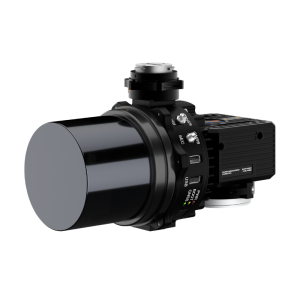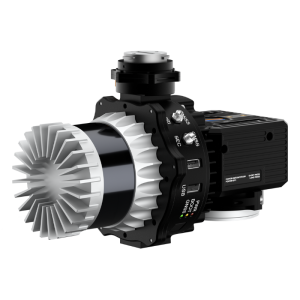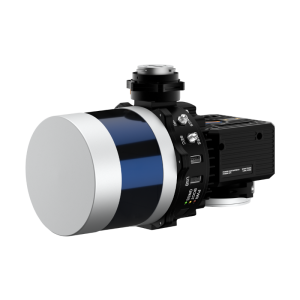
LiDAR Technology and its impact on Fertilization
Abstract:
Over the years, Light Detection and Ranging (LiDAR) has gained traction and popularity in many different work scenarios, including farming. This paper presents a dive into the precision agriculture industry with LiDAR to show its usefulness in improving farm production and efficiency, specifically when applying fertilizer. Fertilizer costs change throughout the year, so methods must be used to apply such a helpful soil additive effectively. These sections will be discussed: Introduction to LiDAR, Fertilization in Farming, and How can LiDAR help Fertilization. Lastly, a conclusion is discussed to display the overall effects of implementing LiDAR for fertilizing methods and some other broad applications of LiDAR use in the precision agriculture industry.
Section 1: Introduction to LiDAR
Before getting into the specifics of the purpose of LiDAR in the farming industry, it's essential first to have a broad understanding of what it is and how it works. LiDAR stands for Light Detection and Ranging and is a remote sensing tool used to measure the distances of scanned objects. These distances are exact depending on the distance and the LiDAR device used. Measurements can be taken by utilizing multiple lasers in the device that shoot narrow cones of light and are on a rotating encoder spinning and spanning a wide horizontal field of view (70 to 360) at high rates of 240,000 to even 1 million points per second for a single return, depending on the scanner used.
Once an area is scanned, these points can create a "point cloud." A point cloud takes all the recorded points from the LiDAR and plots them in a 3D volume, giving the user a 3D representation of what was scanned to compute measurements and volumetrics.
When combined with an INS positioning system, centimeter-level accuracy can give each scanned point a georeferenced location on Earth. Also, using LiDAR with a camera will give color to each point in the cloud. These devices even further widen the uses of LiDAR. An example of a device that takes advantage of these is the Inertial Labs RESEPI Payload [1]. It comes in a small, lighter, affordable package and is fully customizable with the above components to fit any case the end user needs. These payloads are often used on drones and other sUAS devices to get a top-down scan of an area of land.
Although the tools and components are complex, this data collection and analysis process is streamlined. Mathematical and AI implementations are infused into post-processing software to examine all the data for the user. This efficient route enables anyone to learn how to use LiDAR payloads.
Section 2: Fertilization in Farming
In the farming industry, about 12 million metric tons of nitrogen fertilizer is used each year [2], costing an estimated amount of $850 per ton [3]. Nitrogen is a crucial element used to help most crops thrive. Nitrogen fertilizer is used to refresh the soil that lacks nitrogen, so using it in every part of the farmland is optional. Nitrogen can be fed back into the soil using fertilizer or "Nitrogen Fixers." This term describes plants like peas, beans, peanuts, and trees incorporated into the land to help replenish the soil's nitrogen levels [4]. This method of replenishing the nitrogen levels to their optimal position is preferred since it deeply infuses nitrogen into the soil, but it could be better for the farmer. Nitrogen fixers take up farmland, resources, and effort to maintain. Farmers often refer to fertilizer, as their efforts can be put into the crop in demand.
However, water runoff, or leaching, at lower elevated land areas is a common enemy of fertilizer since the fertilizer easily dissolves in water. Whether caused by weather or overwatering, 40% of all water used in the farming industry is lost to the environment, showing how much water is pulled away from the targeted land [5]. The fertilizer lost from the surface then must flow somewhere, often a river or stream. Heavy amounts of nitrogen in bodies of water lead to an overpopulation of algae, harming species. In addition, heavy amounts of fertilizer in the soil already rich in nitrogen can kill underground organisms and fungi, which further help plants thrive by producing nitrogen naturally under the soil and adjusting the soil's PH level [6]. What's worse is that nitrogen is one of many nutrients organisms provide. Other elements such as phosphorus, potassium, and magnesium are supplied to the plant, which needs to be compensated for with more fertilizer.
This information shows how important it is to manage fertilizer carefully along the landscape. Leaching with over-fertilization is a significant cause that will lead to a constant cycle of harm to the crops and environment around them. The question is, how can LiDAR prevent this?
Section 3: How can LiDAR help Fertilization?
Since water runoff is the primary cause of lost fertilizer, the focus should be on preventing it. Although watering less can partly prevent this, it doesn't solve the main issue: the landscape.
As briefly explained, most LiDAR scanners have multiple returns, enabling them to scan on, around, and under specific structures like crops. After an aerial scan through software, crops can be removed from the point cloud to focus only on land flow by elevation. These visuals are often shown through the use and creation of contour maps. With this filtered, georeferenced point cloud turned into a Digital Elevation Model (DEM) or contour map, farmers can observe low elevation spots where water would tend to flow or gather, stealing the nitrogen fertilizer spread on the ground. Volumes, masses, and surface area can all be calculated to measure precisely where and how much dirt to move. A tractor or other advanced farming equipment can then be used to move and level the dirt in a known area accurately.
Other uses of LiDAR regarding fertilization and plant health include measuring the leaf area index (LAI) and observing weeds or discoloration in plants. LAI investigates the density of leaves per square meter of ground space. With a calculated LAI, plant health can quickly be investigated by ensuring each area of land has sufficient exposure to the sun, allowing for more photosynthesis. This value is also essential, as organisms like worms will help decompose these leaves, fertilizing the ground even further.
Scanners such as the mentioned Inertial Labs RESEPI come with colorization features. Examining discoloration in plants is also an essential component of caring for farmland. These observations can lead to several conclusions, such as underwatering, weed growth, and under-fertilization. If signs of under-fertilization are shown, measures can be taken to ensure that only plots of land that are lacking get fertilized. Another common cause of discoloration is low sunlight exposure, primarily due to a high LAI, causing a lack of photosynthesis from deficient chlorophyll levels [7].
Utilizing LiDAR to handle landscape level, maintaining a steady LAI, and ensuring healthy crop color are all steps in maximizing land use while holding onto nutritious soil for future planting and expansion.
Conclusion:
Although Fertilization is the main application focus of this writing, it's important to briefly mention other heavy applications when applying LiDAR technology to farm maintenance. Some more applications include investigating plant height, count, and other biomass estimates. Plant height and count can easily be found from LiDAR point clouds to estimate crop yield and health for each season accurately.
Taking advantage of all these use cases shows the potential of LiDAR systems within the precision agriculture industry. Efficiently tracking land elevation to prevent lost fertilizer and impact plant health by examining LAI, discoloration, and biomass estimates will lead to higher yields, lower environmental harm, and sustaining farmland health. These steps will also save time and even remove the need for people to take on these tasks so resources can be placed in other areas of need.
References:
[1] “RESEPI – LiDAR Payload & SLAM Solutions.” RESEPI, lidarpayload.com.
[2] “U.S. Fertilizer Consumption by Nutrient.” Statista, www.statista.com/statistics/1330021/fertilizer-consumption-by-nutrient-us/.
[3] Ibendahl, Gregg. Fertilizer Price Outlook for 2024. 2024.
[4] Waddington, Author Elizabeth. “40 Nitrogen Fixing Plants to Grow in Your Garden.” Rural Sprout, 29 May 2020, www.ruralsprout.com/nitrogen-fixing-plants/.
[5] Balsom, Paul. “Water Usage in the Agricultural Industry | High Tide Technologies.” High Tide Technologies, 28 Sept. 2020, htt.io/water-usage-in-the-agricultural-industry/.
[6] Sol, Jimi. “Understanding Our Soil: The Nitrogen Cycle, Fixers, and Fertilizer.” Www.youtube.com, 28 Jan. 2021, www.youtube.com/watch?v=A8qTRBc8Bws.
[7] Ortiz, Pete. “Why Plant Leaves Turn White: 10 Reasons & Fixes.” House Grail, 23 Sept. 2022, housegrail.com/reasons-plant-leaves-turn-white/#:~:text=Plants%20need%20sufficient%20light%20for%20photosynthesis%20because%20insufficient. Accessed 3 June 2024.
Do you have questions about this article?
Get in touch with Inertial Labs, Inc., and they would be happy to answer any questions you have about pricing, suitability, availability, specs, etc.













